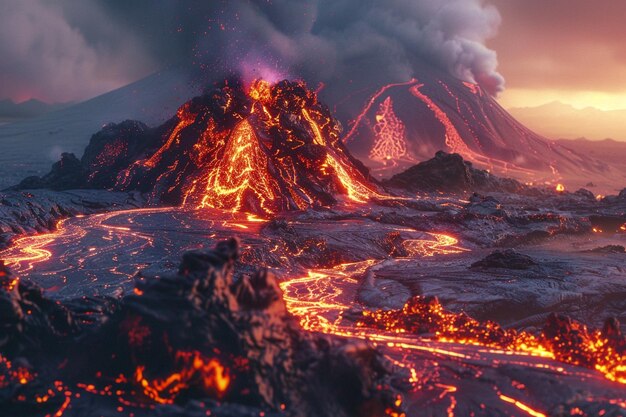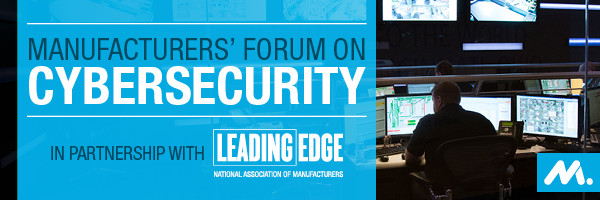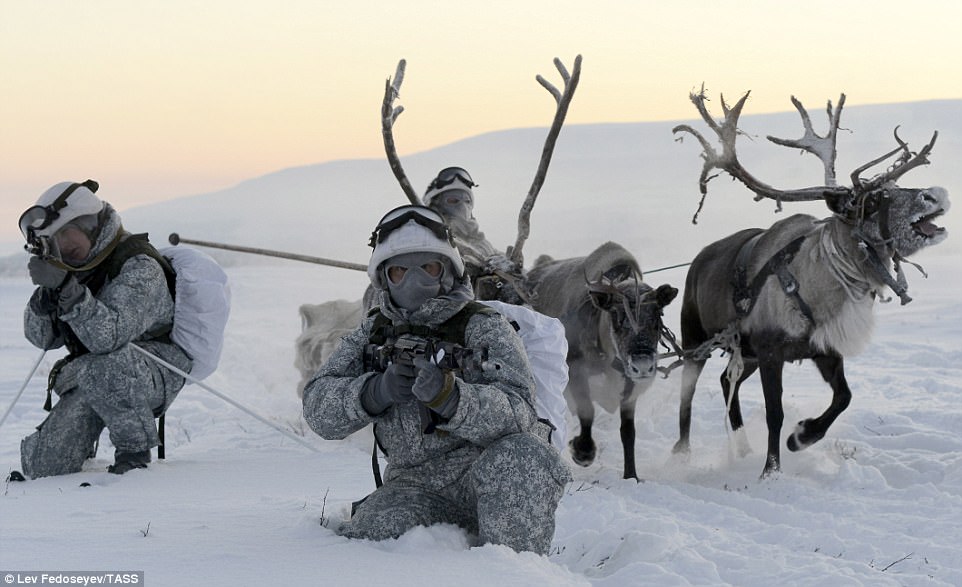Earth - Series 1: Inferno: A Deep Dive Into Volcanic Activity

Table of Contents
Understanding the Mechanisms of Volcanic Activity
Volcanic activity is fundamentally linked to plate tectonics, the theory describing the movement of Earth's lithospheric plates. The immense pressure and heat beneath the Earth's surface cause the mantle to partially melt, forming magma. This magma, less dense than the surrounding rock, rises towards the surface, often accumulating in magma chambers beneath volcanoes. The type of volcano formed – shield, stratovolcano (composite), or cinder cone – depends largely on the viscosity of the magma and the style of eruption.
- Subduction zones: These regions where one tectonic plate slides beneath another are significant contributors to volcanic activity. The subducting plate melts, generating magma that rises to create volcanic arcs, like those found along the Pacific Ring of Fire.
- Hotspots: These plumes of exceptionally hot mantle material can create volcanic chains as the tectonic plate moves over them, as exemplified by the Hawaiian Islands.
- Magma composition: The silica content of magma dictates its viscosity. High-silica magma is viscous, leading to explosive eruptions, while low-silica magma is less viscous, resulting in effusive eruptions with relatively gentle lava flows.
- Eruption styles: Effusive eruptions involve the relatively gentle outpouring of lava, while explosive eruptions are characterized by violent ejection of pyroclastic material (fragments of rock, ash, and gas).
Types and Impacts of Volcanic Eruptions
Volcanic eruptions are classified into several types based on their characteristics. Hawaiian eruptions feature gentle lava flows, while Strombolian eruptions produce intermittent bursts of lava and pyroclastic material. Plinian eruptions are the most violent, generating colossal ash columns that can reach tens of kilometers into the atmosphere. Visual aids, such as images and videos of these different eruption types, can greatly enhance understanding.
The immediate impacts of volcanic eruptions can be devastating. Lava flows can engulf vast areas, pyroclastic flows (fast-moving currents of hot gas and volcanic matter) pose extreme threats to life and property, and ash clouds can disrupt air travel and damage infrastructure. Lahars, volcanic mudflows, can also cause significant destruction.
- Atmospheric effects: Volcanic eruptions inject large amounts of ash and gases into the atmosphere, potentially influencing climate patterns and air quality. Significant eruptions can cause temporary global cooling.
- Ecosystem impacts: Eruptions can devastate local ecosystems, impacting biodiversity and disrupting habitats. However, volcanic areas can also support unique and resilient ecosystems adapted to the harsh conditions.
- Historical eruptions: The eruption of Mount Vesuvius in 79 AD, which buried Pompeii and Herculaneum, remains a stark reminder of the destructive power of volcanoes. The 1815 eruption of Mount Tambora caused the "Year Without a Summer."
- Long-term geological effects: Volcanic activity plays a crucial role in shaping Earth's surface, building mountains, and creating new landforms. It contributes significantly to the rock cycle and the formation of various mineral deposits.
Predicting and Monitoring Volcanic Activity
Predicting volcanic eruptions accurately remains a significant challenge. However, scientists utilize a range of techniques to monitor volcanoes and assess their activity levels. These methods include:
- Seismic monitoring: Detecting changes in seismic activity (earthquakes) beneath a volcano can indicate magma movement.
- Gas emissions: Monitoring changes in the composition and abundance of volcanic gases can provide valuable insights into magma dynamics.
- Ground deformation: Measuring changes in the shape of the volcano's surface using techniques like GPS and InSAR can indicate magma accumulation.
Despite advancements in monitoring technology, accurate eruption forecasting remains difficult due to the complex nature of volcanic systems.
- Early warning systems: Establishing effective early warning systems and evacuation plans are crucial for mitigating volcanic risks. These plans need community involvement and robust communication strategies.
- Technological advancements: The use of satellite imagery, remote sensing, and sophisticated data analysis techniques has significantly improved volcano monitoring capabilities.
- Scientific research: Ongoing scientific research is essential for improving our understanding of volcanic processes and enhancing predictive capabilities.
- International collaborations: International collaboration among scientists and organizations is crucial for sharing data, resources, and expertise in volcano monitoring and risk management.
The Benefits of Volcanic Activity
While volcanic eruptions can be destructive, they also offer significant benefits. The weathering of volcanic rocks produces exceptionally fertile soils, supporting thriving agriculture in many regions.
- Volcanic soils: These soils are rich in nutrients, making them highly productive for agriculture. Many famous wine regions are situated on volcanic soils.
- Geothermal energy: Volcanic areas often provide abundant geothermal energy resources, a sustainable and renewable energy source.
- Landform creation: Volcanic activity creates stunning landscapes and unique geological features, attracting tourists and contributing to local economies.
- Economic benefits: Volcano tourism can be a significant source of revenue for communities living near volcanoes, provided safety measures are in place.
Conclusion
Volcanic activity is a powerful geological force shaping our planet. Understanding its mechanisms, predicting its impacts, and mitigating its risks requires a multifaceted approach involving continuous monitoring, scientific research, and international collaboration. This article has explored the key aspects of volcanic activity, from its underlying processes to its diverse consequences and the ongoing efforts to predict and manage its potential hazards. The benefits of volcanic activity, while often overshadowed by its destructive potential, are also significant and deserve recognition. Continue your exploration of the fascinating world of volcanic activity by visiting [link to related resource] and delve deeper into Earth's fiery processes. Stay tuned for the next installment in our "Earth" series to explore other powerful geological forces.

Featured Posts
-
 Sam Elliott Confirmed For Landman Season 2 A Cast Report
May 13, 2025
Sam Elliott Confirmed For Landman Season 2 A Cast Report
May 13, 2025 -
 Ian Mc Kellen Young Actors Shouldnt Stay In The Closet
May 13, 2025
Ian Mc Kellen Young Actors Shouldnt Stay In The Closet
May 13, 2025 -
 Trumpin Virhe Vai Byd N Nerokkuus Analysointi Teslan Kilpailutilanteesta
May 13, 2025
Trumpin Virhe Vai Byd N Nerokkuus Analysointi Teslan Kilpailutilanteesta
May 13, 2025 -
 Season Two Confirmed Demi Moore To Star In Yellowstone Creators Hit Drama
May 13, 2025
Season Two Confirmed Demi Moore To Star In Yellowstone Creators Hit Drama
May 13, 2025 -
 Manufacturers Prioritize Cybersecurity A 63 5 Investment Focus
May 13, 2025
Manufacturers Prioritize Cybersecurity A 63 5 Investment Focus
May 13, 2025
Latest Posts
-
 South Africa Emerges As Top Apple Exporter Displacing New Zealand
May 13, 2025
South Africa Emerges As Top Apple Exporter Displacing New Zealand
May 13, 2025 -
 Rediscover A Hilarious Scarlett Johansson And Chris Evans Movie On Netflix
May 13, 2025
Rediscover A Hilarious Scarlett Johansson And Chris Evans Movie On Netflix
May 13, 2025 -
 Netflix Adds Undiscovered Scarlett Johansson And Chris Evans Film
May 13, 2025
Netflix Adds Undiscovered Scarlett Johansson And Chris Evans Film
May 13, 2025 -
 The Reawakening Of Putins Arctic Naval Forces A Geopolitical Assessment
May 13, 2025
The Reawakening Of Putins Arctic Naval Forces A Geopolitical Assessment
May 13, 2025 -
 Crew Bounce Back 2 1 Victory Over Earthquakes
May 13, 2025
Crew Bounce Back 2 1 Victory Over Earthquakes
May 13, 2025
